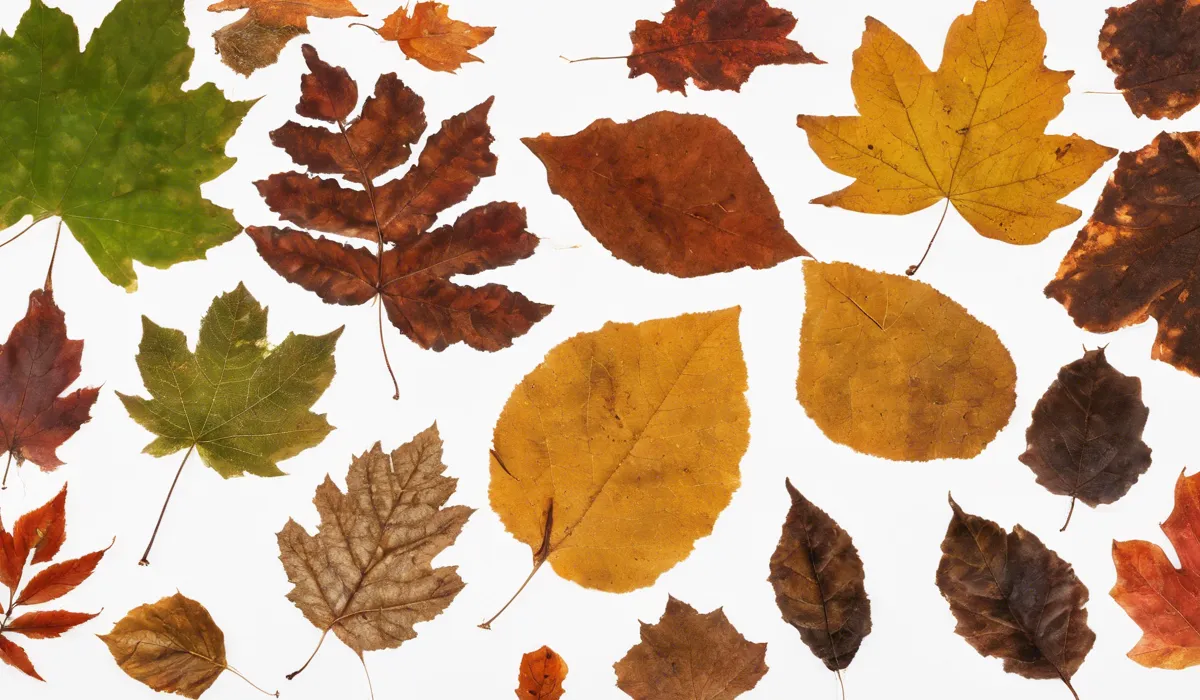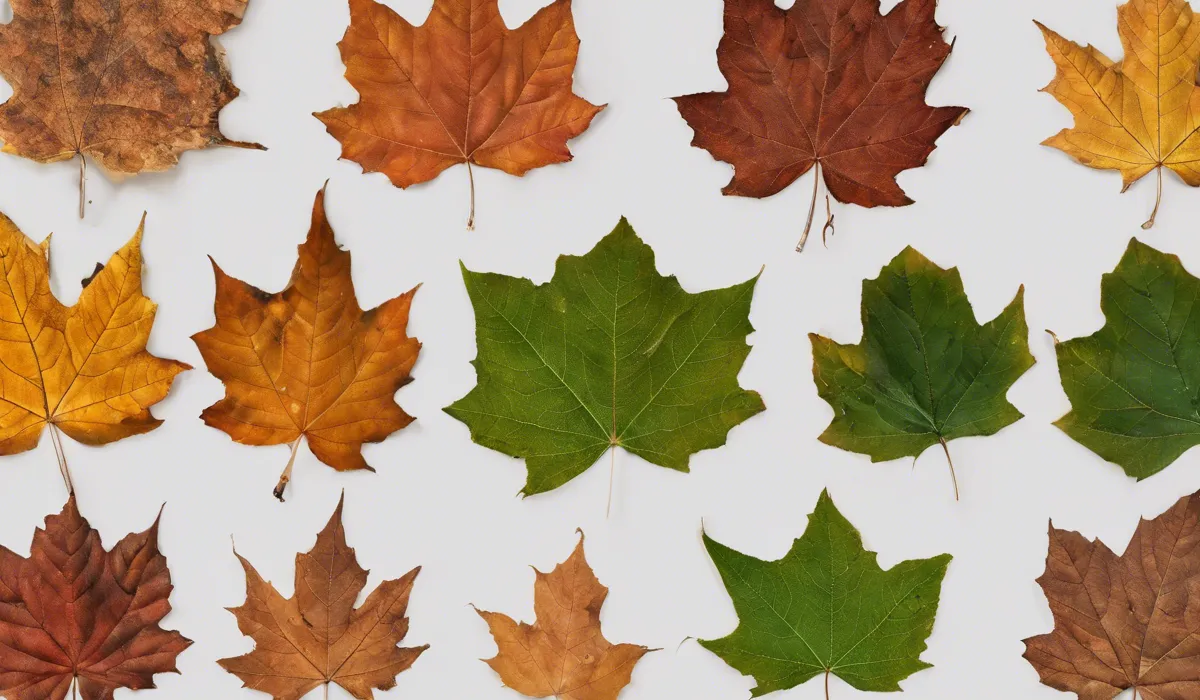To make leaf mold, collect fallen leaves and moisten them. Pile them in a shaded area or in a bin, ensuring good air circulation. Turn the pile occasionally to speed up decomposition. In 6-12 months, the leaves will break down into a rich, crumbly mold.
Understanding Leaf Mold

Definition of Leaf Mold
Leaf mold is a type of compost made entirely from decomposed leaves. It transforms into a dark, rich, and crumbly substance over time.
Unlike traditional compost, which is a mix of various organic materials, leaf mold strictly comes from leaves and is prized for its ability to improve garden soil.
Benefits for the Garden
Soil Conditioner
Leaf mold is excellent for conditioning the soil. It helps break up heavy soils, allowing for better root growth and water penetration. It can also help sandy soils retain water more effectively.
Moisture Retention
Leaf mold has a remarkable ability to hold onto water. This means that it can help soil retain moisture, reducing the need for frequent watering and protecting plants during dry spells.
Nutrient Provision
While leaf mold is not as nutrient-rich as other composts, it still provides essential nutrients to the soil. These nutrients are released slowly, which benefits plants over a longer period.
Microbial Life Enhancement
Leaf mold is teeming with beneficial microorganisms. These microbes play a critical role in maintaining healthy soil by breaking down organic matter and aiding in nutrient absorption by plants.
Comparison with Other Composting Methods
Compared to traditional composting, which can take a mixture of organic materials, leaf mold is specific to leaves and generally takes longer to produce.
However, it requires less maintenance and is an excellent way to recycle leaves that might otherwise be discarded.
Collecting and Preparing Leaves

Best Types of Leaves for Making Leaf Mold
Almost any fallen leaves can be used to make leaf mold, but some types decompose faster than others.
Oak, maple, and beech leaves are particularly good for creating leaf mold because they break down at a moderate rate and provide a good structure for the pile.
Gathering Leaves
Tools Needed
To gather leaves efficiently, you will need a sturdy rake, large bags for transport, and bins or a designated area for your leaf mold pile.
Optimal Conditions for Collection
The best time to collect leaves is during the fall when they have just fallen and are dry. This makes them easier to handle and less likely to mat down when piled.
Preparing Leaves for Faster Decomposition
Shredding Leaves
Shredding leaves before piling them can significantly speed up the decomposition process. This increases the surface area for microbes to work on and helps prevent matting.
Maintaining Proper Moisture Levels
Leaves should be kept moist, like a wrung-out sponge, to decompose properly. If the leaves dry out, they will stop decomposing; if they are too wet, they can become slimy and anaerobic.
Setting up a Leaf Mold Pile or Bin
Choosing a Location
Select a shaded spot for your leaf mold pile to help retain moisture. The location should also be convenient for you to access and manage.
Size and Containment Methods
Your leaf pile should be at least three feet high and wide, but not so large that the center is deprived of oxygen. You can contain your pile using wire mesh bins, wooden pallets, or simply leave it as a free-standing heap.
The Decomposition Process and Usage

Timeframe for Leaf Mold Creation
Factors Influencing Decomposition Rate
Typically, leaf mold takes 6-12 months to form. The rate of decomposition can be influenced by the type of leaves, the size of the leaf particles, the moisture level, and the climate.
Checking and Maintaining the Pile
Moisture
Regularly check your pile to ensure it remains moist. During dry periods, you may need to add water to maintain the proper moisture level.
Aeration
Occasionally turn the pile to introduce oxygen, which is vital for the decomposition process. This can also help to redistribute moisture and speed up the breakdown of leaves.
Temperature Monitoring
While leaf mold piles do not usually heat up as much as compost piles, it is still good practice to monitor the temperature to ensure the pile is active and decomposing.
Harvesting the Leaf Mold
How to Determine When It’s Ready?
Leaf mold is ready when it is dark, crumbly, and smells like earth. At this stage, the original leaves should be unrecognizable.
How to Harvest and Store It?
Use a shovel or pitchfork to collect the finished leaf mold. It can be stored in bags or bins until you are ready to use it in your garden. Make sure it stays moist and covered to preserve its quality.
Using Leaf Mold in the Garden
As Mulch
Spread leaf mold on top of your soil to conserve moisture, suppress weeds, and gradually improve soil structure as it breaks down.
As Soil Amendment
Mix leaf mold into your garden beds to enhance soil structure and fertility. It will encourage beneficial microbial activity and help your plants thrive.
In Potting Mixes
Add leaf mold to potting mixes for container plants. It will provide a light, airy structure and help retain moisture in the soil.
As a Lawn Top Dressing
Spread a thin layer of leaf mold over your lawn to improve the soil quality and promote healthier grass growth.
FAQs About Making Leaf Mold
What materials do I need to make leaf mold?
To make leaf mold, you need a collection of fallen leaves, water to moisten them, and a shaded area or bin to pile them in, ensuring good air circulation.
How long does it take to make leaf mold?
It typically takes 6-12 months for leaves to break down into leaf mold under proper conditions.
Do I need to turn the leaf pile, and if so, how often?
Yes, turning the pile occasionally helps to speed up decomposition. Aim to turn it every few weeks or months, depending on the size and condition of the pile.
Can I make leaf mold in any season?
Leaf mold can be made in any season, but starting in the fall when leaves are abundant is most convenient.
What is the best way to store finished leaf mold?
Store finished leaf mold in a cool, dry place, such as a shed or covered bin, to preserve its structure and nutrients until you’re ready to use it.
Final Thoughts
Creating leaf mold involves gathering moistened fallen leaves and stacking them in a shaded, well-ventilated spot or a bin. To expedite the decomposition process, the pile should be turned now and then.
After 6 to 12 months, this method yields a nutrient-rich, crumbly leaf mold ideal for garden use.
